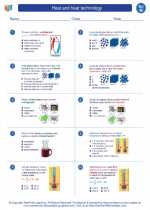Exploring the Element Tin
Tin is a chemical element with the symbol Sn and atomic number 50. It belongs to the carbon group of elements in the periodic table, along with lead, germanium, and flerovium. Here's a comprehensive study guide to help you understand the properties, uses, and significance of tin.
Properties of Tin
Tin is a silvery-white metal with a faint golden tinge. It is malleable, ductile, and relatively soft, making it easy to work with. Tin has a melting point of 231.93°C and a boiling point of 2602°C. It is a relatively stable element, not reacting with oxygen at room temperature.
Occurrences and Extraction
Tin is found in various minerals, including cassiterite (tin dioxide) and stannite. The extraction of tin from its ores involves several steps, including crushing, concentration, and smelting. The process of smelting tin ores involves the reduction of tin oxide to produce pure tin metal.
Uses of Tin
Tin has been used by humans for thousands of years. Some common uses of tin include:
- Coating for food and beverage cans
- Alloying with other metals to make solder, bronze, and pewter
- Manufacture of tin plating for steel to prevent corrosion
- Production of various tin compounds for industrial applications
Significance in History and Industry
Tin has played a significant role in human history, particularly in the development of metalworking and trade. Its use in creating bronze alloys, an important technological advancement, revolutionized the production of tools, weapons, and art. In modern industry, tin continues to be essential for various manufacturing processes and applications.
Environmental and Health Considerations
While tin itself is relatively non-toxic, some of its compounds can have adverse effects on human health and the environment. Proper handling and disposal of tin-containing materials are important to prevent contamination and potential harm.
Conclusion
Understanding the properties, uses, and significance of tin is crucial for appreciating its role in industry, history, and everyday life. By exploring the diverse applications and impact of tin, we gain a deeper insight into the world of chemistry and materials science.
[Tin] Related Worksheets and Study Guides:
.◂Science Worksheets and Study Guides Eighth Grade. Heat and heat technology

 Worksheet/Answer key
Worksheet/Answer key
 Worksheet/Answer key
Worksheet/Answer key
 Worksheet/Answer key
Worksheet/Answer key
 Vocabulary/Answer key
Vocabulary/Answer key
